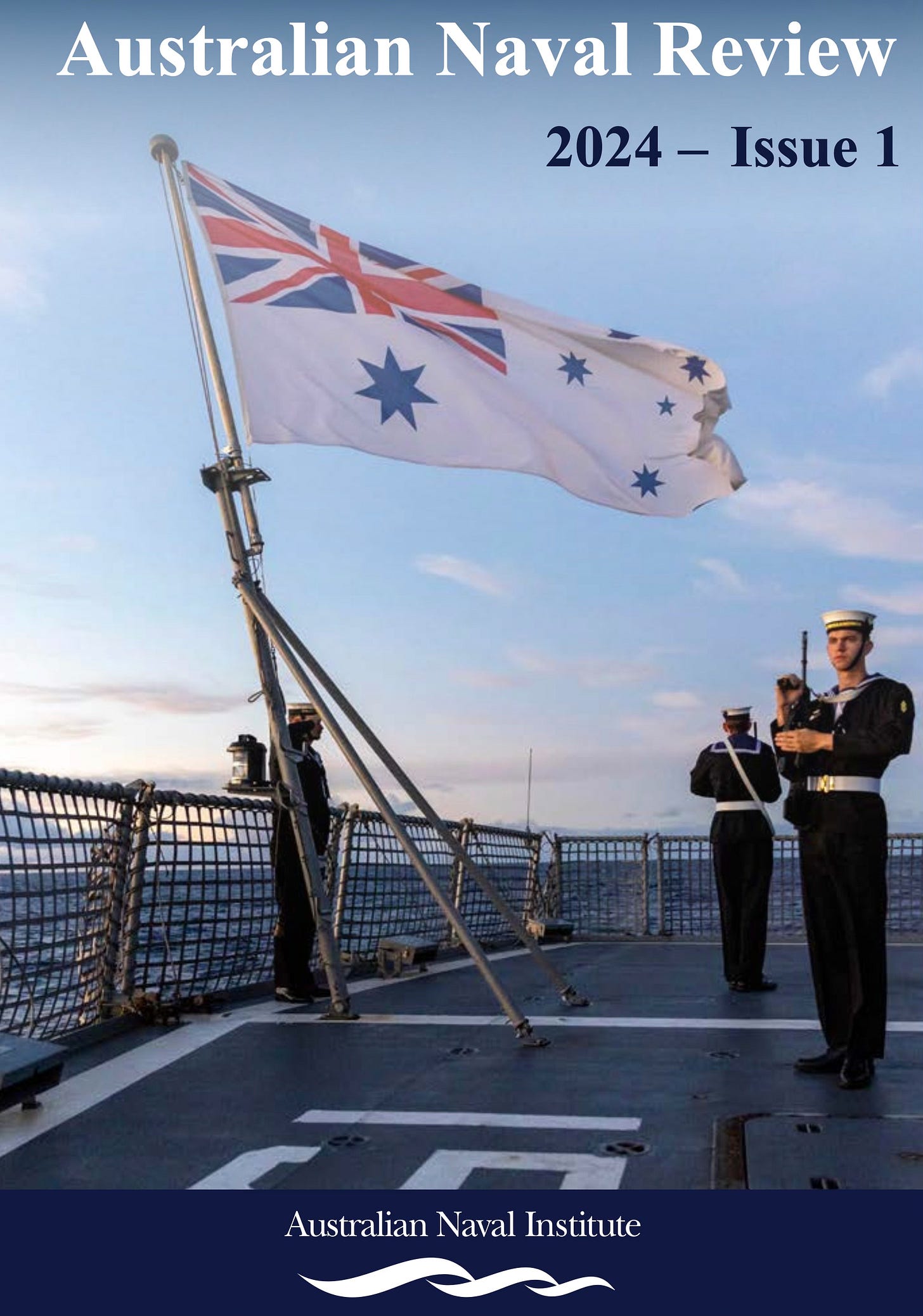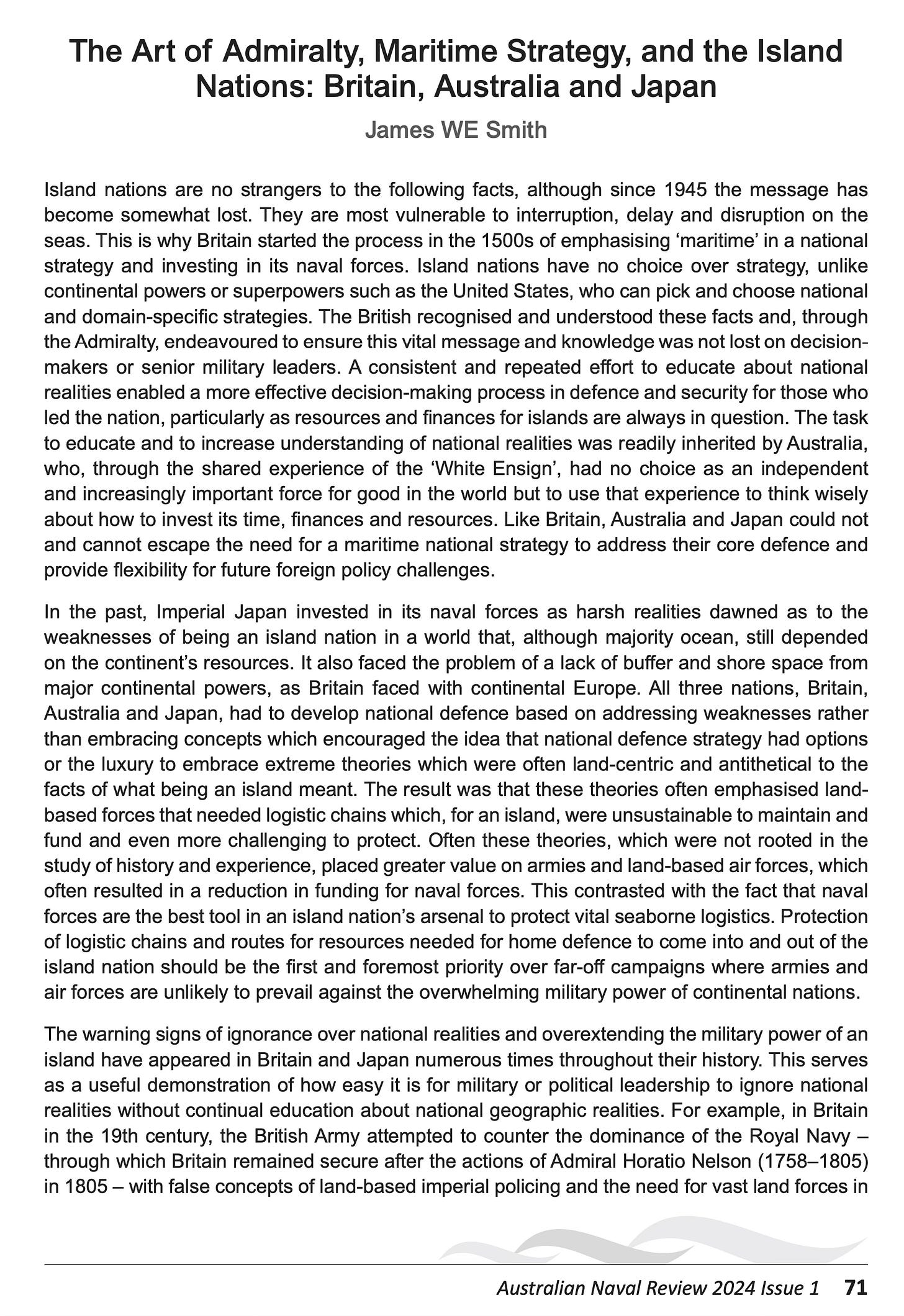The Art of Admiralty, Maritime Strategy, and the Island Nations: Britain, Australia, and Japan
A chapter for the ADFA/ANI Publication and the Australian Naval Review.
The following is a chapter in an ADFA/ANI Publication link here and a special version in the Australian Naval Review.
Abstract: Island nations are no strangers to the following facts, although, after 1945, the message has become somewhat lost: they are most vulnerable to interruption, delay, and disruption on the seas. It is why Britain started the process in the 1500s, emphasising ‘maritime’ in a national strategy and investing in its naval forces. Island nations have no choice over strategy, unlike continental powers or superpowers such as the United States, who can pick and choose national and domain-specific strategies. The British recognised and understood these facts and, through the Admiralty, did so to ensure this vital message and knowledge was not lost to decision-makers or senior military leaders. A consistent and repeated effort to educate about national realities enabled a more effective decision-making process in defence and security for those who led the nation, particularly as resources and finances for islands are always in question. The task to educate and increase understanding of national realities was readily inherited by Australia, who, through the shared experience of the ‘White Ensign’ had no choice as an independent and increasingly important force for good in the world but to use that experience to think wisely about how to invest its time, finances, and resources. Like Britain, Australia and Japan could and cannot escape the need for a maritime national strategy to address its core defence and provide flexibility for future foreign policy challenges….



